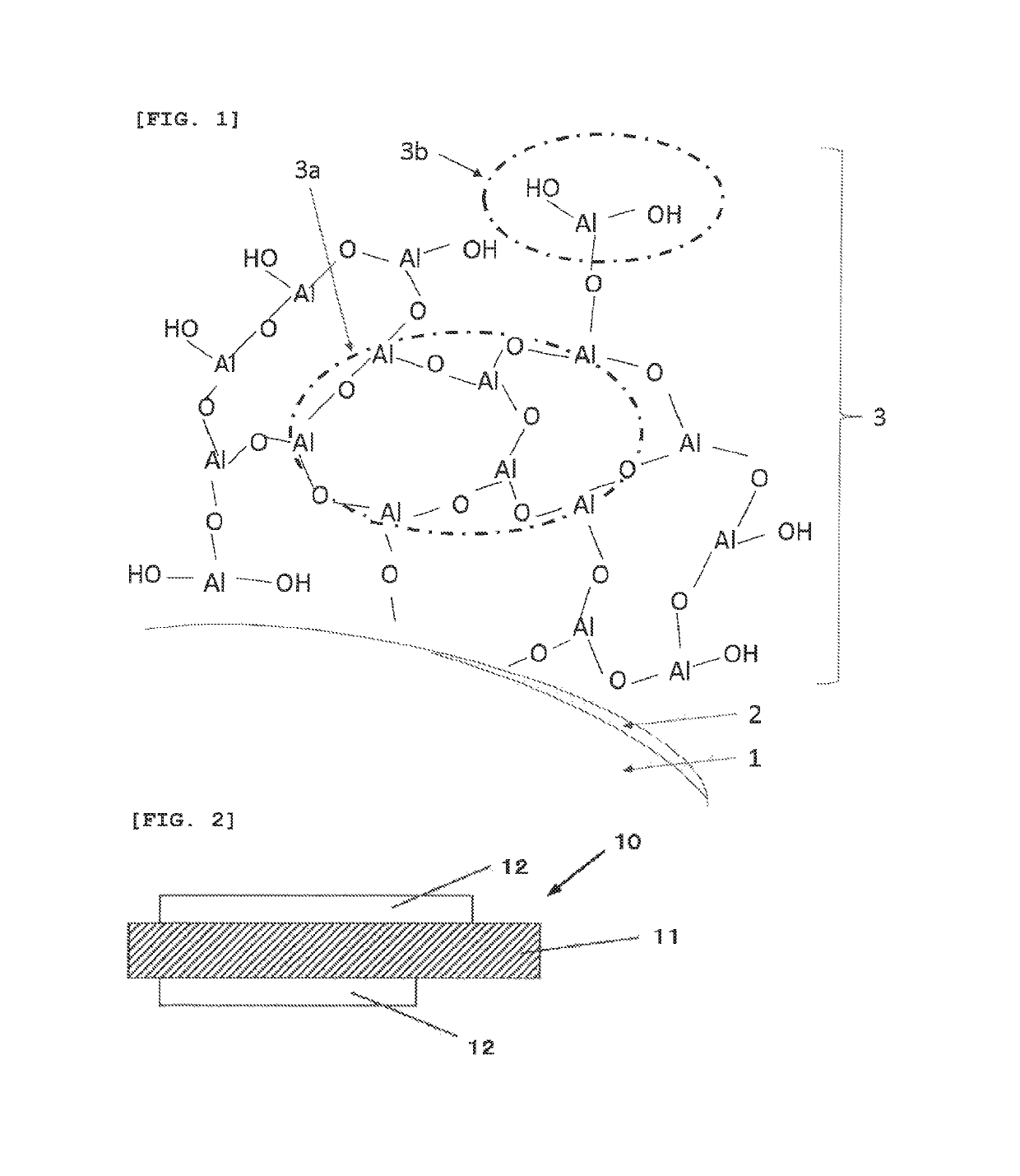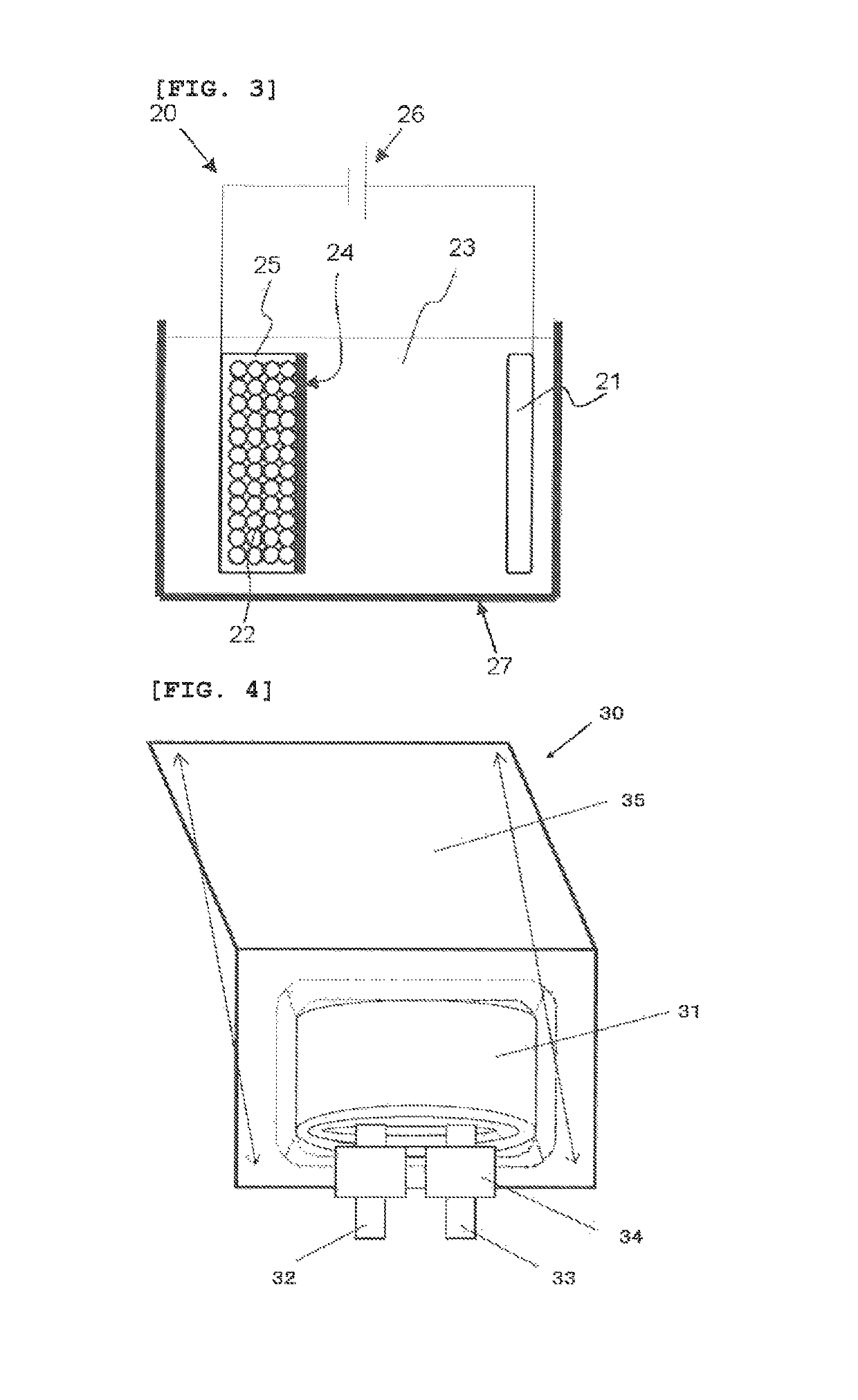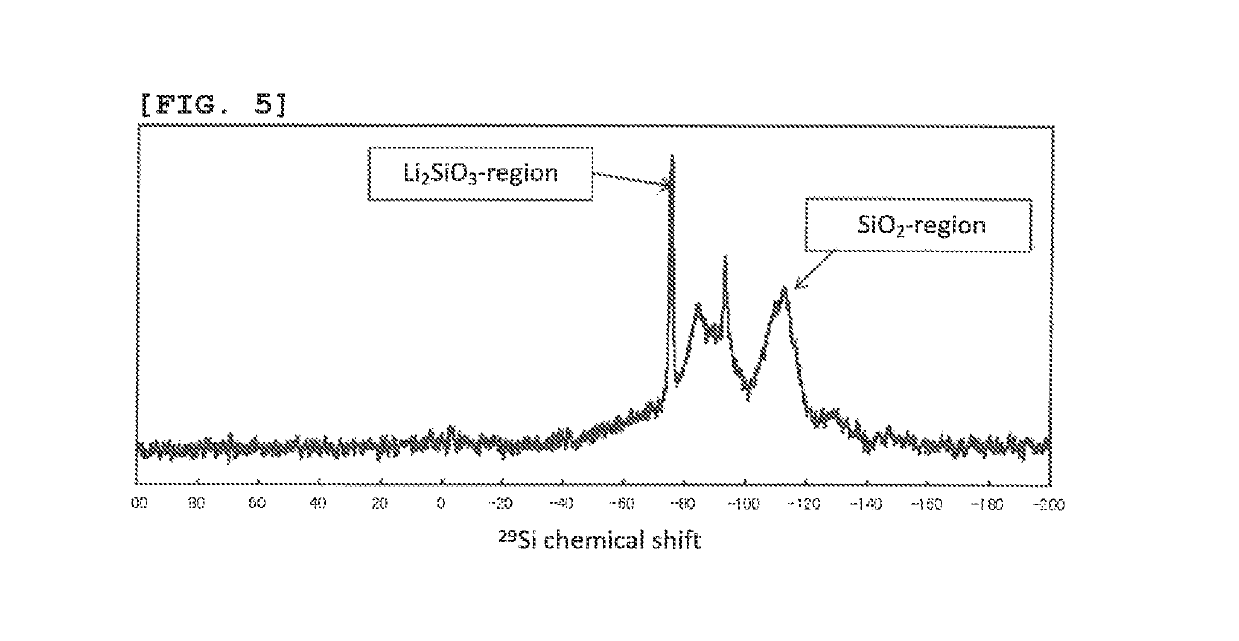Negative electrode active material for non-aqueous electrolyte secondary battery, non-aqueous electrolyte secondary battery, and method of producing negative electrode material for non-aqueous electrolyte secondary battery
a secondary battery and negative electrode technology, applied in the direction of cell components, electrochemical generators, silicates, etc., can solve the problems of electrolyte consumption, achieve the effects of improving the stability of slurry, improving the battery capacity, cycle performance, and first charge and discharge property
- Summary
- Abstract
- Description
- Claims
- Application Information
AI Technical Summary
Benefits of technology
Problems solved by technology
Method used
Image
Examples
example 1-1
[0142]The laminate film secondary battery 30 shown in FIG. 4 was produced by the following procedure.
[0143]The procedure began with the production of a positive electrode. Positive electrode active materials of 95 mass parts of lithium-nickel-cobalt-aluminum complex oxide (LiNi0.7Co0.25Al0.05O), 2.5 mass parts of a positive electrode conductive additive (acetylene black), and 2.5 mass parts of a positive electrode binder (polyvinylidene fluoride, PVDF) were mixed to produce a positive-electrode mixture. The positive-electrode mixture was dispersed in an organic solvent (N-methyl-2-pyrrolidone, NMP) to form paste slurry. The slurry was applied to both surfaces of a positive electrode current collector with a coating apparatus having a die head and dried with a drying apparatus of hot-air type. The positive electrode current collector used herein had a thickness of 15 μm. The resultant was finally compressed with a roll press.
[0144]Next, a negative electrode was produced. In the begin...
examples 1-2 to 1-4
[0153]A secondary battery was produced as in Example 1-1 except that the types of the metal, oxide and metal hydroxide in the composite layer were changed to those containing an element shown in Table 1. The types of the metal oxide and metal hydroxide can be changed by changing the metal alkoxide used in the sol-gel reaction in forming the composite layer.
examples 2-1 and 2-2
and Comparative Examples 2-1 and 2-2
[0164]A secondary battery was produced as in Example 1-1 except that the oxygen, content in the bulk of the silicon compound was adjusted. In this case, the oxygen content was adjusted by changing the ratio in the raw material to be vaporized and the temperature. Table 2 shows each value in the silicon compound expressed by SiOx in Examples 2-1 and 2-2 and Comparative Examples 2-1 and 2-2.
[0165]
TABLE 2D50 = 4 μm, Graphite (natural graphite: artificialgraphite = 5:5) D50 = 20 μm, SiOx ratio 10% by weight(in a ratio of active material), SiO2 contained, Metal material inthe composite layer Al 3 nm, Li2SiO3 contained, Carboncoating 5% by mass, dQ / dV determined, Half width 2.257°, Crystallite3.77 nm, Modification method: thermal doping, A > BRetentionFirstGasxrate (%)efficiency (%)generationComparative0.365.089.1 1 weekExample 2-1Example 2-10.580.088.7 1 weekExample 2-21.680.088.348 hoursComparative1.869.085.524 hoursExample 2-2
[0166]When the oxygen am...
PUM
| Property | Measurement | Unit |
|---|---|---|
| thickness | aaaaa | aaaaa |
| thickness | aaaaa | aaaaa |
| chemical shift | aaaaa | aaaaa |
Abstract
Description
Claims
Application Information
 Login to View More
Login to View More - R&D
- Intellectual Property
- Life Sciences
- Materials
- Tech Scout
- Unparalleled Data Quality
- Higher Quality Content
- 60% Fewer Hallucinations
Browse by: Latest US Patents, China's latest patents, Technical Efficacy Thesaurus, Application Domain, Technology Topic, Popular Technical Reports.
© 2025 PatSnap. All rights reserved.Legal|Privacy policy|Modern Slavery Act Transparency Statement|Sitemap|About US| Contact US: help@patsnap.com



